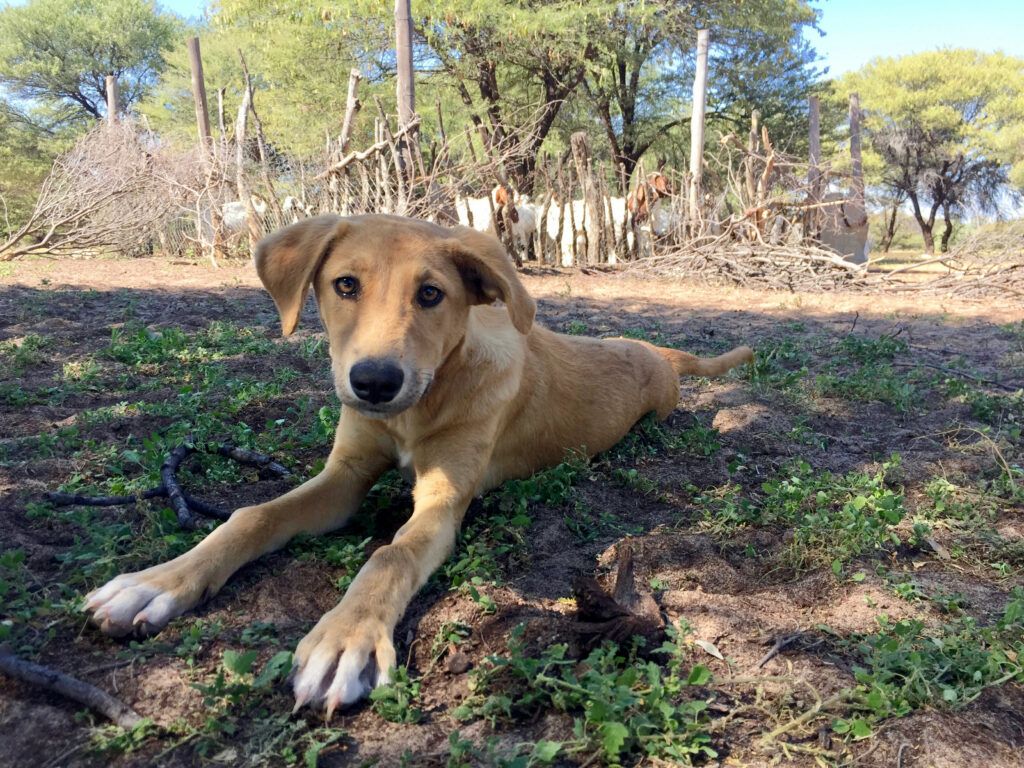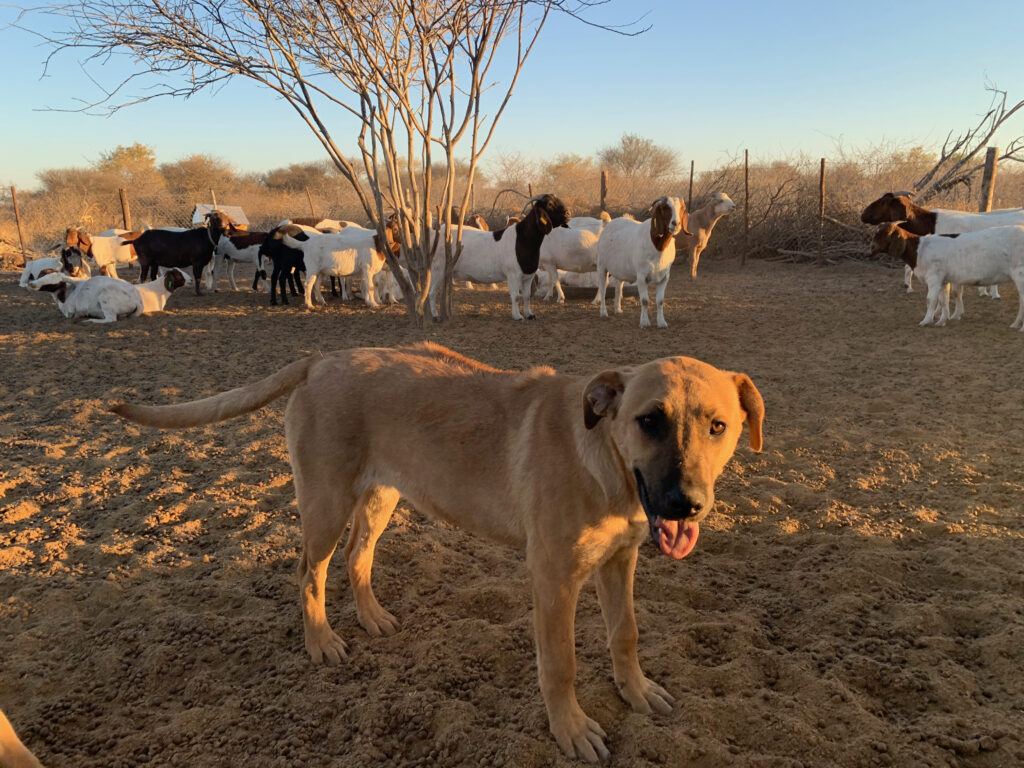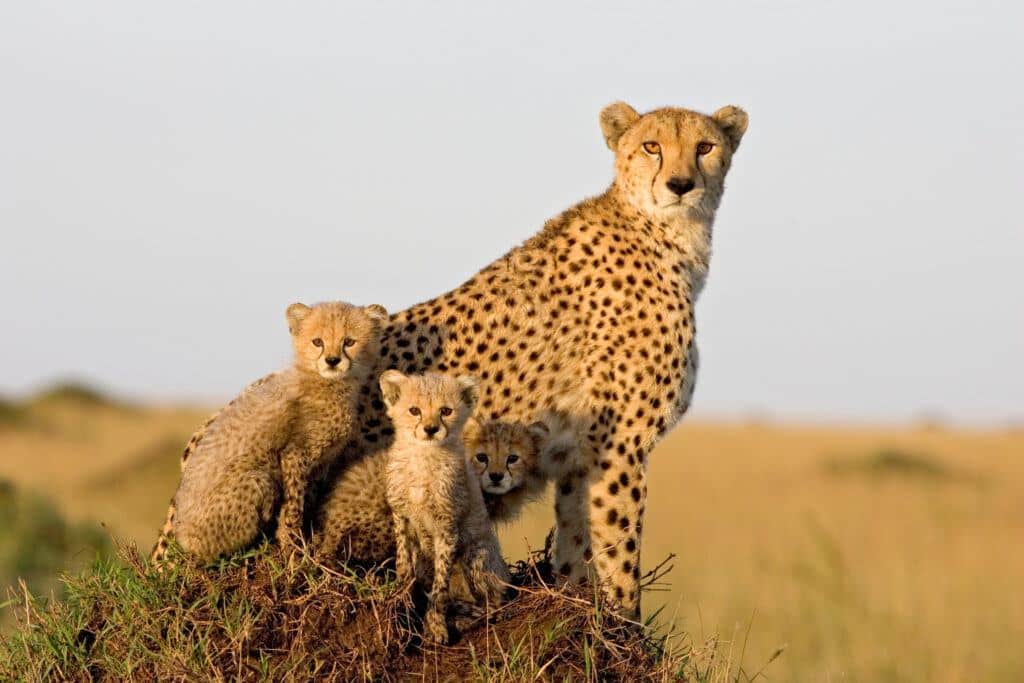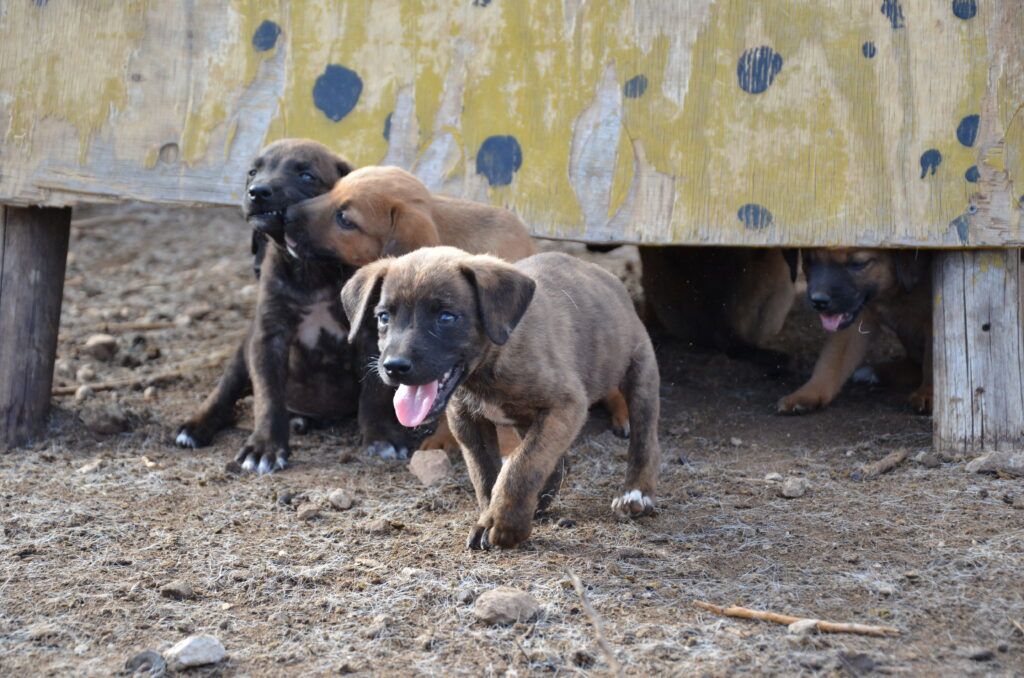The dogs were already barking when his truck pulled up to the Ghanzi camp. As he left the vehicle, desert dust bloomed from a dozen rushing paws and Max Seele spied tails frantically wagging behind the wooden fence slats. He had arrived at Cheetah Conservation Botswana’s (CCB) demonstration farm, where their livestock guarding dog (LGD) training facility prepares these canines to protect farmers’ livestock and prevent human-cheetah conflict. Max reached over the fence to greet a young Tswana dog, a local variety with a bright future in the program thanks to CCB’s intensive research.
The LGD program creates goodwill with farmers and eliminates the primary threat to cheetahs—retaliatory killings for lost livestock. Half of LGD owners are no longer hostile toward cheetahs and conflict is decreasing where LGDs are deployed. Since 2013, CCB has placed 146 dogs with farmers across Botswana, who have seen an 85% reduction in livestock losses. As the Ghanzi Camp Coordinator, Max manages the demonstration farm where LGDs are trained, and historically, imported Anatolian shepherds have been the preferred breed in similar programs from CCB’s peers. But CCB’s findings from a decade-long study indicate that local landrace dogs—dogs that haven’t received any formal breeding but have adapted to living in human environments—known as Tswana dogs are better suited for the job.
Although CCB’s Farming for Conservation team have always championed Tswana dogs, some farmers in Botswana did not share their confidence. Unlike the imposing Anatolian shepherds, Tswana dogs are smaller in size, so farmers doubted their ability to scare away large carnivores. Anatolian shepherds also carried an air of quality, being expensive purebreds, and farmers didn’t trust that the local dogs roaming their streets would be up to the task. Some even declined CCB’s LGD program because they didn’t use Anatolians and the farmers didn’t want a Tswana dog. So CCB set out to prove the worth of Tswana dogs and discovered that these landrace pups were far cheaper, much better behaved, and easier to train than the Anatolians. Being natives, the Tswana dogs also handled the extreme heat and rough terrain of Botswana’s Kalahari region far better than imported Anatolians, which often sought shade on the hottest days. Their smaller size also didn’t hinder their ability to successfully guard livestock from cheetahs, jackals, and even leopards.
Informed by this impressive data, CCB has been validated for making Tswana dogs the stars of their LGD program. Max and his team source unwanted puppies from local villages to train with adult LGDs at their facility, which helps the young dogs learn quicker. CCB’s research shows that each LGD can save up to six cheetahs every year from retaliatory killings and save farmers an annual average of $1,300 in livestock losses, and Tswana dogs will only bolster these numbers as the program continues. These dogs are effective, accessible, and happy protecting their herds, which they treat as family. Their devotion and aptitude for the work will ensure that more cheetahs are saved, farmers’ attitude toward cheetahs improves, and that Tswana dogs get the credit they deserve.
Support Cheetah Conservation Botswana





2 Comments